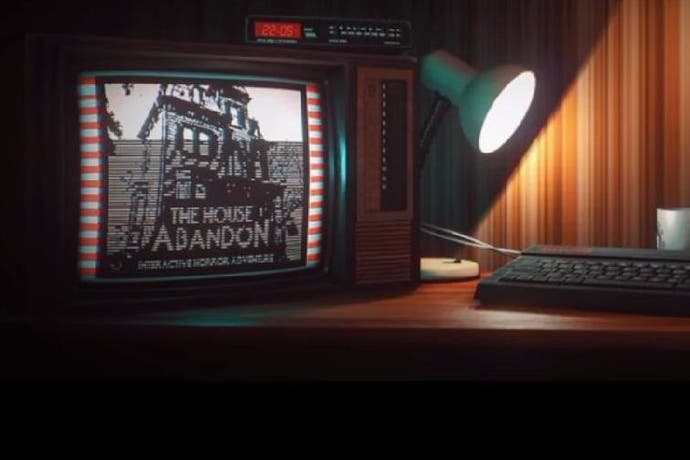Stories Untold review
Elegy for the 20th century.
Editor's note: Emily discusses the premise of each Stories Untold episode below. If you'd rather not spoil things for yourself, play before reading.
We're nearly two decades into the new millennium, but so much of our cultural identity is still lodged somewhere in the latter half of the 20th century - the retro synths of Kavinsky and Cliff Martinez invading Hollywood through Nicolas Winding Refn's Drive in 2011, the 16-bit carnage of Hotline Miami. Even for me, most of my memories from the first decade of the Noughties are inexorably linked to that French opiated dancefloor aesthetic which penetrated my radio during my early 20s. It's almost as though a wormhole keeps opening up between the 1980s and the 21st century, creating a strange fusion of both periods. Whether this kind of nostalgia is unique to our particular moment in time or not, it's become something of a recurring theme in the work of designer Jon McKellan.
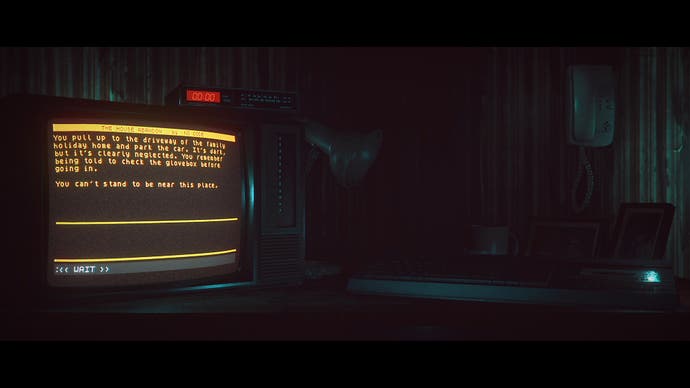
McKellan's distorted-VHS aesthetic will be familiar to you if you've played Alien Isolation, the 2014 release that recreates the analogue visual style of Ripley Scott's 1979 film right down to vector distortions in the title sequence. As the game's UI designer, McKellan helped to formalise the method for making digital look analog - including weird experiments like running game footage through a battered old VHS player for authentically ancient-looking results.
Now heading the Glasgow-based indie studio No Code, McKellan has translated his experience as a maker of creepy, lo-fi science fiction environments into a new digital anthology of retro, tech-centered horror stories called Stories Untold. The series is presented as a game within a game - or possibly a game within a game within an episodic TV series - which exists in a universe that is like this one but not exactly. Tonally, think Black Mirror or Welcome to Night Vale. Something is wrong but you can't quite put your finger on it.
McKellan and his team came up with the idea as a Ludum Dare entry in August of last year, resulting in the exquisitely creepy interactive horror game The House Abandon (available for free on itch.io). Now, with publisher Devolver Digital, the studio has remastered its earlier release and expanded it with three additional episodes, each less than an hour long.
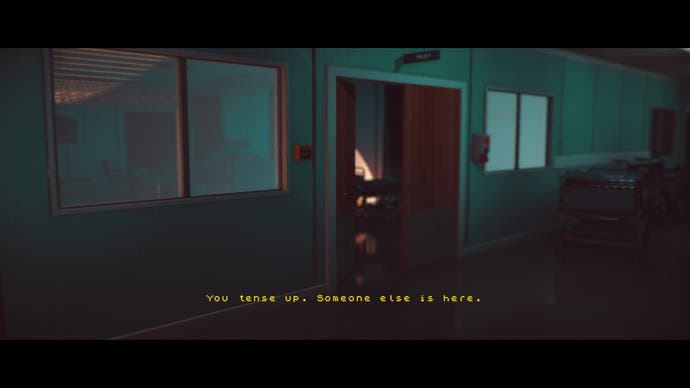
The episodes all start like something you'd find on cable TV late at night, with opening credits that dreamily bob between family photos and the technology of an alternate 1980s universe. There's a tape recorder, a TV display encased in a circa 1986 faux-wood veneer, and a keyboard-integrated personal computer that bears a striking resemblance to the now-classic ZX Spectrum 2. The camera eventually rests its gaze on a stack of video games, with in-game box art designed by Kyle Lambert, an illustrator whose previous work includes the poster for Netflix pop culture phenomenon Stranger Things.
The House Abandon marks your arrival to your old bedroom desk with a sinister Speccy loading game screech. Once the in-game game is loaded, the player uses the wood-veneer monitor to explore in a familiar text adventure style. You've arrived back at your family home after some time away. It's empty, but your father leaves a note saying he's left you an old computer to occupy yourself with. Why not go upstairs and put it together?
As with the Zorks and Hitchhiker's Guides of the early 80s, you rely on clunky text commands to navigate. You unlock the door. Read the letter. Look in your sister's bedroom. Don't worry - you're not expected to be fluent in the arcane grammar of text adventures in Stories Untold, and exploration is, in any case, pretty minimal. The House Abandon is more comparable to flipping through family photos - with all the sense-memories and emotional baggage included in that territory - than it is wandering through a haunted house.
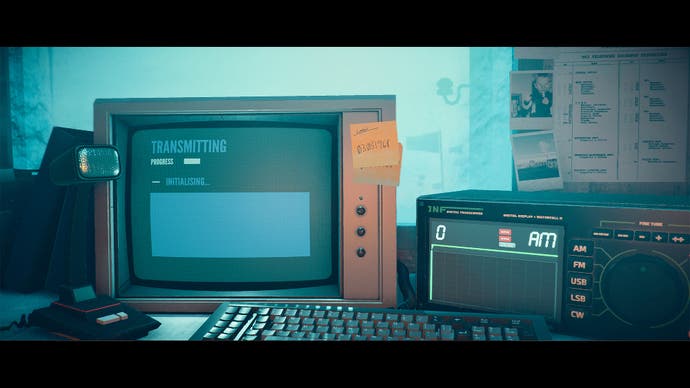
As the in-game narrative twists back into the primary storyline, thunder cracks through the silence of the house and the electricity snaps off. This is a great test to see if you are wearing your headphones or not. Stories Untold is so purposefully developed to be played alone in the dark that they even make a point of telling you to turn the lights off in their system requirements.
After a few moments of darkness your computer reboots. The House Abandon title screen loads in on your monitor - chug chug chug - upside-down. The parser text now introduces your old happy family home as a derelict building. Type command "Open door" and a door creaks open in the room below you. Type command "Go up stairs" and footsteps thump up to the landing behind you.
The interactive fiction genre has a long history as a pulpit for weird, experimental meta-narratives. The immeasurably gifted Emily Short used text command and multilinear dialogue trees to tell the story of love between man and AI in Galatea. Likewise, Jack Welch and Ben Collins-Sussman would go on to turn the text adventure format into an experiment in meta storytelling, piling up several layers of reality in the XYZZY-nominated game Rover's Day Out.
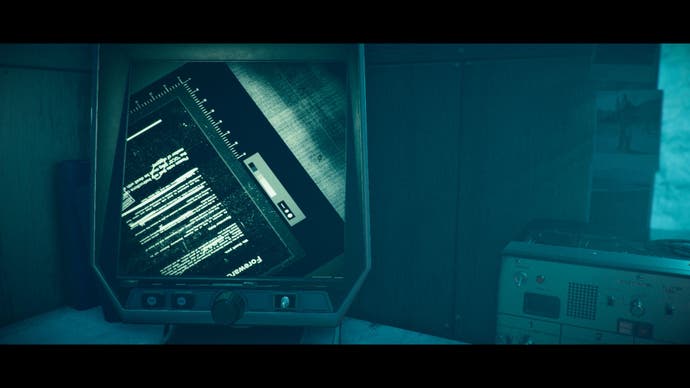
No Code has similarly experimental instincts. In Stories Untold the text adventure structure serves to obscure the world as much as it describes it. Text commands like Look Around, for example, will trigger some nice introspective prose about your surroundings. But you'll quickly come to realise reality isn't what it seems and your senses can't really be trusted.
In the second episode, called The Lab Conduct, you find yourself once again at a desk in 1986, only this time in front of a computer display which reads in ominous DOS-green text: U.S. Department of Experimental Science. A voice crackles over the PA, complete with in an authoritative yet reassuringly calm English accent: You are to follow the step-by-step procedure from a manual on the terminal, no questions asked. This is perhaps more Milgram Experiment than traditional text adventure - No Code likes to play loose with the genre's limitations, introducing things like visual and audio-based puzzles and even a first-person walkabout later on.
Like a good radio play, The Lab Conduct squeezes tension out of a scene through its audio design: a deep wheeze from an old x-ray machine, the high-pitched whistle of a frequency gauge that rises in time with each ominous action. Episode 3 takes this same idea but transports you to a monitoring station on a Greenland research base, where unseen broadcasters radio in about strange things lurking in the snowstorm outside. Here, you'll be must find distress calls hidden in obscure radio frequencies, or listen intently to simplified Morse code and translate its message.
As fanciful as the game can be, the technology feels unnervingly true to its period - right down to the inherent awkwardness of microfilm readers. This might be the game's most powerful effect - if you're a child of the 1980s, it will feel as though it's lifting directly from your memories. The first time you saw John Carpenter's The Thing; your old IBM; the brown-yellow vertical-stripe wallpaper that decorated the suburbs of North America. Like the best interactive fiction, it erodes the distinction between player and protagonist, albeit by bombarding your senses with signifiers of your childhood.
Which brings us to the dangers of nostalgia. Perhaps it's just me, but I have a suspicion that nostalgia in the new millennium has a quality all of its own. Our parents and parents-parents were energised during the post-world-war years by the idea that a better and brighter future lay ahead of us. Now, having reached the 21st century we find we live not in a gleaming dream but a world of radical uncertainty, a world that can do nothing but ruminate on the past.
Nostalgia can soothe the homesick, but ultimately you can't go home again. Where Stories Untold is at least partly a genuflection at the altar of old stuff, it touches on another idea: the way nostalgia distorts reality, and how it can be used to hide reality from yourself.
